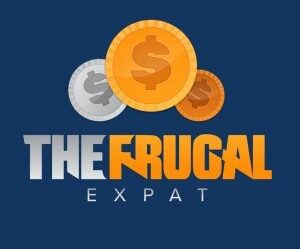Whether you’re looking for tax-efficient income, capital preservation, or steady, measured growth, dividend stocks are essential in many portfolios. In looking for a high-yield, low-cost, and diversified option to meet this need, your search may have led you to two of the most popular dividend ETFs on the market: DGRO vs SCHD.
If you’re considering one of these two funds to grow your dividend earnings, you should first take a moment to familiarize yourself with the essential facts, similarities, and differences. Either DGRO or SCHD could make a solid addition to the right portfolio, but one may better suit your needs and investing goals than the other.
iShares Core Dividend Growth ETF (DGRO) Overview:
The iShares Core Dividend Growth ETF, or DGRO, is an income-focused fund with roughly $23.8 billion in assets. The ETF prioritizes US equities with a long history of dividend growth for investors seeking a steady income yield.
DGRO is passively managed and tracks an index of US equities, meaning lower fees, higher tax efficiency, and better margins for investors than an actively managed equivalent. With 428 holdings, DGRO is also a highly diversified platform. The fund mitigates the already-low risk of investing in its mainly large-cap stocks by spreading its investment across such a broad section of the market.
DGRO Top 10 holdings:
- Exxon Mobil Corp. (XOM)
- Microsoft Corporation (MSFT)
- JPMorgan Chase & Co. (JPM)
- Johnson & Johnson (JNJ)
- Apple Inc (AAPL)
- Abbvie Inc (ABBV)
- Chevron Corp. (CVX)
- Procter & Gamble Co. (PG)
- Home Depot, Inc. (HD)
- Broadcom Inc (AVGO)
Schwab US Dividend Equity ETF (SCHD) Overview:
Like DGRO, The Schwab US Dividend Equity ETF (SCHD) is a dividend-centric index fund. It is passively managed with low fees and high tax efficiency, and it also invests in US equities with a consistent pattern of growing dividends.
With $49.1 billion in assets under management, SCHD is a considerably larger fund than DGRO. It also invests those assets with a narrower focus – SCHD tracks the Dow Jones US Dividend 100 index, putting its investments into only 106 holdings, as opposed to DGRO’s 400-plus.
SCHD Top 10 holdings:
- Amgen Inc (AMGN)
- Cisco Systems Inc (CSCO)
- Abbvie Inc (ABBV)
- Home Depot Inc (HD)
- Broadcom Inc (AVGO)
- Chevron Corp (CVX)
- Merck & Co Inc (MRK)
- Pepsico Inc (PEP)
- Coca-Cola (KO)
- Verizon Communications Inc (VZ)
Related: SCHD vs VYM: Which is the Better Dividend ETF?
Fund Allocation
Before diving deeper into the weeds of any mutual fund or ETF, the first thing to consider should always be the fund’s portfolio. What does the fund invest in, and how well does that align with your current goals?
From a high-level view, DGRO and SCHD both invest their assets across an array of US equities known for solid dividend payouts.
But if the funds weren’t already quite similar, you likely wouldn’t be here looking for a comparison, and there are some key differences here worth noting. One of the biggest is the respective indices the two funds track.
As noted above, DGRO’s comparatively larger index means greater diversification. But beyond a certain point, diversification isn’t always for the best. A side-by-side comparison of the two funds’ holdings, or even their top 10s above, can reveal two significantly different approaches to the same goal.
DGRO vs SCHD Dividend Yield

One can hardly make an informed comparison of two dividend funds without a closer investigation of the dividends themselves.
At the time of writing, SCHD reports a dividend yield of 3.62%, as compared to DGRO’s 2.37%, giving the Schwab fund a significant edge in this category.
While there are other vital financials to consider, like capital growth, risk, taxes, and fees, few metrics will be as crucial as dividend yield in this analysis. One of the main objectives of a dividend ETF is to provide steady income (and income growth) to its investors. Based on present data, SCHD is poised to offer significantly more income per dollar invested than DGRO.
Minimum Investments of DGRO vs SCHD

One key factor in deciding whether to invest in a fund is whether there is a minimum investment to consider and whether clearing that threshold makes sense for your situation.
Fortunately for the average retail investor, both DGRO and SCHD are exchange-traded funds (ETFs). As such, they can operate with the diversification and potential of a traditional mutual fund but with the flexibility and maneuverability of a single stock.
Investors can buy into either fund through the NYSE, so the only minimum an investor will need to meet in most cases is the price of a single share. At the time of this writing, that is around $50 for DGRO and $75 for SCHD. These prices will likely fluctuate and grow over time but still fall well below the thousands of dollars needed for the minimum investment in many traditional mutual funds.
Expense Ratios
As index ETFs, both DGRO and SCHD offer remarkably low expense ratios. For an investor looking to grow their dividend income without incurring unnecessary fees and taxes, index ETFs like these are always a strong option.
It would be hard to call either of these funds a bad choice on expenses alone. However, wherever compound growth is concerned, every fraction of a point matters. And on this front, one fund has a noticeable edge. SCHD boasts an expense ratio of just 0.06% compared to DGRO’s 0.08%.
Two-hundredths of a single percentage point may not seem like an earth-shattering difference to some. Still, for a savvy index investor, every effort to minimize costs over the long term can yield dramatic results.
iShares vs. Schwab
It may not always be the most central factor in analyzing a mutual fund, but paying attention to who you’re investing with can play a role for many investors. In this case, the two key players are Charles Schwab and iShares by BlackRock.
iShares is an ETF brand under the management of BlackRock, one of the world’s largest asset managers. While the iShares brand has existed in some form for over 20 years, BlackRock has owned it since 2009. iShares deals exclusively in ETFs in many global markets. Most of its properties are passively managed index funds, though it also contains some actively managed options.
Charles Schwab, one of the most recognizable household names in personal wealth management, offers numerous financial services, including banking, investment advising, and institutional consulting. It manages mutual funds and ETFs of practically every description and is a popular one-stop shop for advising, brokerage services, and fund management.
Both of these names are highly recognized as some of the largest and most respected brands in the ETF space. Investors would be in good hands with either organization, although personal history and preference may play a significant role in this decision.
DGRO vs SCHD: The Bottom Line
Dividend growth is one of the most effective ways for investors to build steady passive income with a limited tax burden, and dividend ETFs are one of the best ways to get your portfolio in that game. The only decision that remains, then, is finding the right dividend ETF for the job.
Though far from the only contenders, iShares’ DGRO and Schwab’s SCHD are two of the most robust and popular options for investors looking to build their dividend exposure. The two funds have all their best traits in common, though there are a few crucial distinctions. Deciding which is best for your portfolio will primarily come down to personal preference on distinguishing factors like diversification, expenses, and growth vs. yield.
Wherever you land between DGRO and SCHD, you will likely have a solid portfolio option for steady growth and reliable income.
More Articles From The Frugal Expat
- SCHD vs VIG: Which High Growth Dividend ETF Wins?
- VIG vs VYM: What is the Best Vanguard Dividend ETF?
Sam is the founder of the personal finance and self-improvement blog Smarter and Harder. His mission is to start exciting new conversations that empower people to improve their work, lives, and money, and hopefully have a fantastic time doing it. In all things, he strives to lead with positivity, understanding, and more than a bit of enthusiasm.







